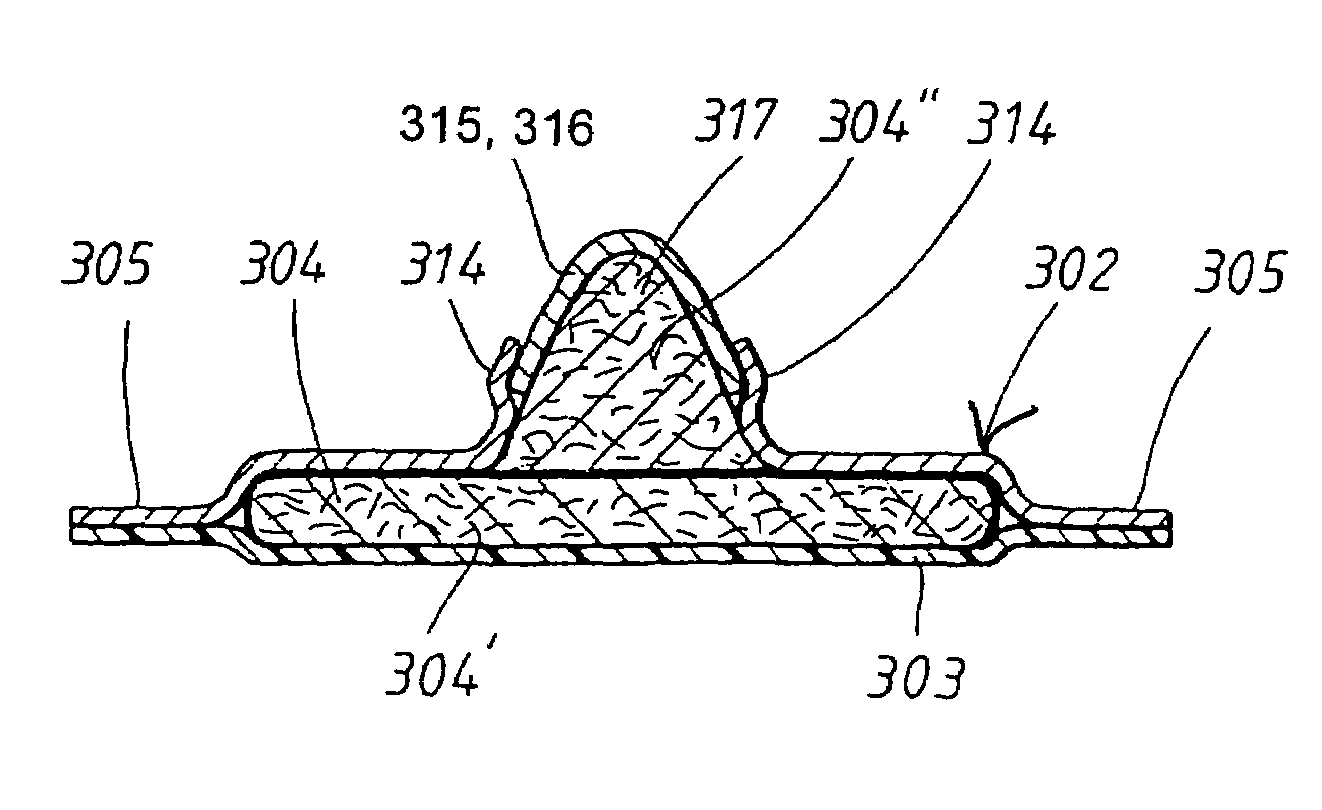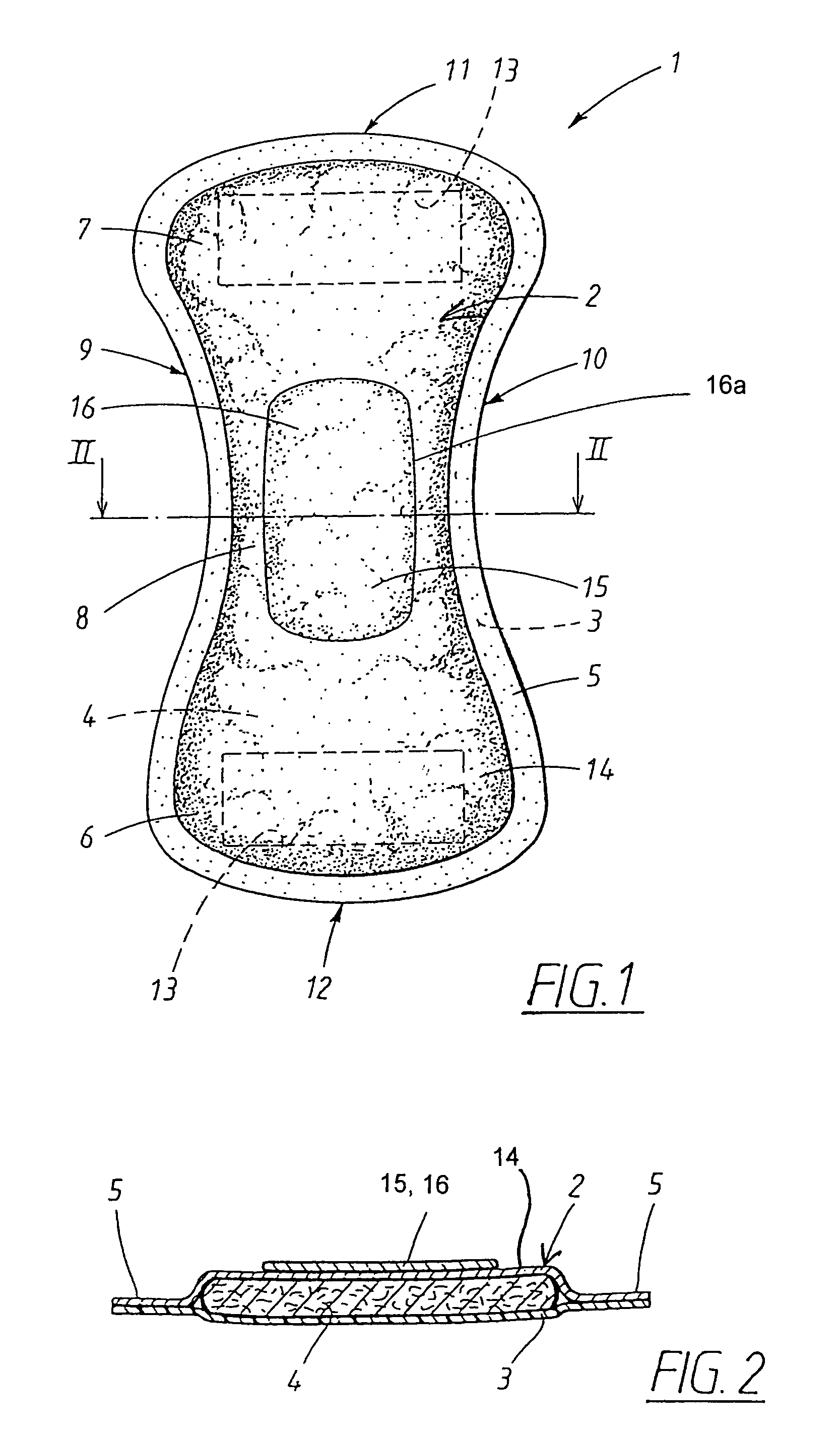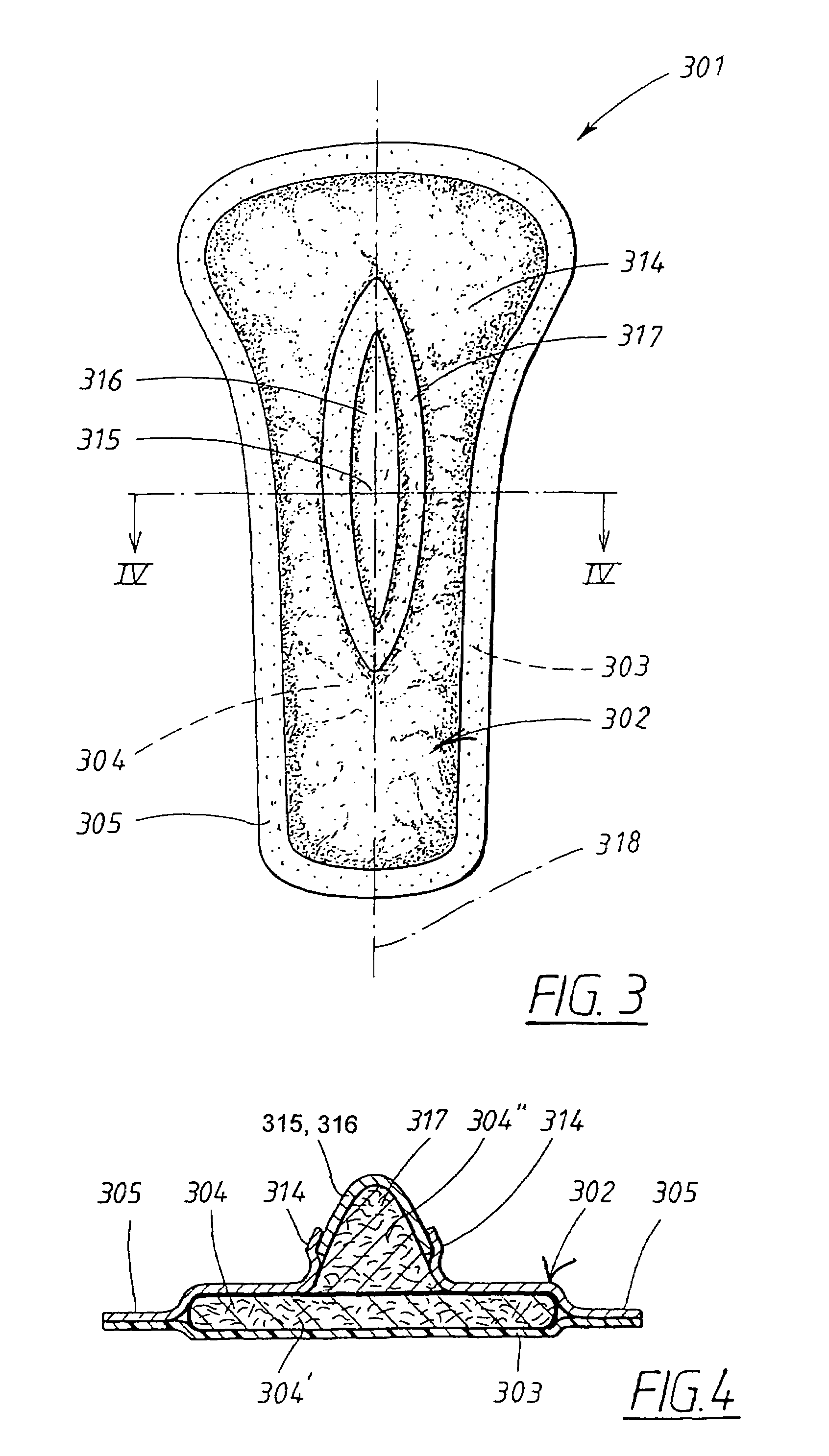Absorbent article having improved surface properties
a technology of absorbent articles and surface properties, applied in the field of absorbent articles, can solve the problems of user inconvenience, surface wetness and sticky, perceived as extremely unpleasant by a majority of users,
- Summary
- Abstract
- Description
- Claims
- Application Information
AI Technical Summary
Benefits of technology
Problems solved by technology
Method used
Image
Examples
Embodiment Construction
[0030]The sanitary napkin 1 shown in FIGS. 1 and 2 comprises a user-facing liquid-pervious first side 2, composed of first and second layers 14, 16, which is intended to be facing the user during use, a liquid-impervious layer surface layer 3 defining an opposite second side of the sanitary napkin which is intended to be facing away from the user during use, and an absorbent body 4 enclosed between the layers 14, 3. The layers 14, 3 have essentially the same shape as the absorbent body 4, but a slightly larger extension in the plane, whereby they form a protruding edge 5 around the entire periphery of the absorbent body 4. The layers 14, 3 are mutually connected within the protruding edge 5, for example by gluing, sewing, or welding by means of heat or ultrasonics.
[0031]The liquid-impervious surface layer 3 is of a conventional type and may, accordingly, consist of any liquid-impervious material suitable for the purpose. Examples of such materials are different types of thin plastic...
PUM
 Login to View More
Login to View More Abstract
Description
Claims
Application Information
 Login to View More
Login to View More - R&D
- Intellectual Property
- Life Sciences
- Materials
- Tech Scout
- Unparalleled Data Quality
- Higher Quality Content
- 60% Fewer Hallucinations
Browse by: Latest US Patents, China's latest patents, Technical Efficacy Thesaurus, Application Domain, Technology Topic, Popular Technical Reports.
© 2025 PatSnap. All rights reserved.Legal|Privacy policy|Modern Slavery Act Transparency Statement|Sitemap|About US| Contact US: help@patsnap.com



